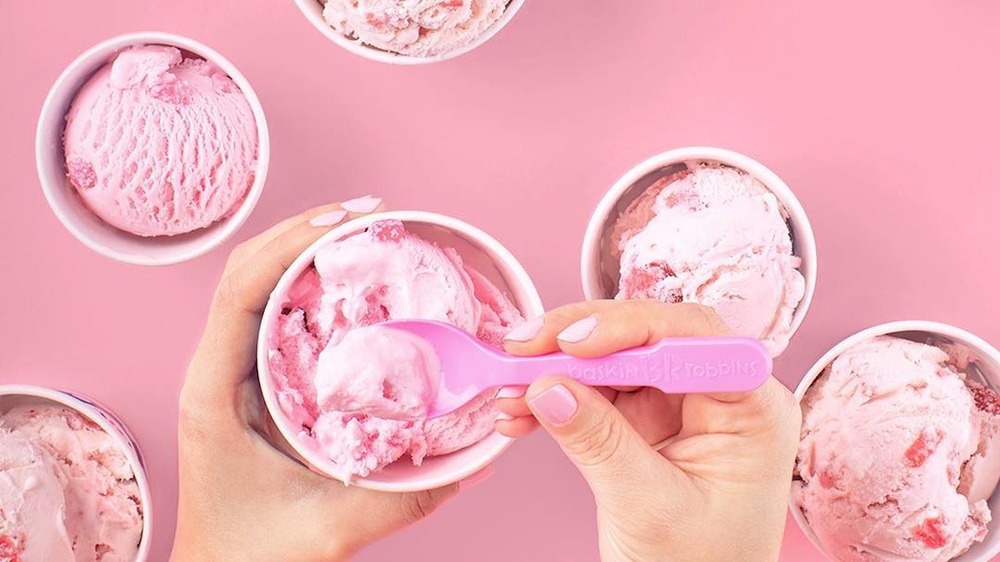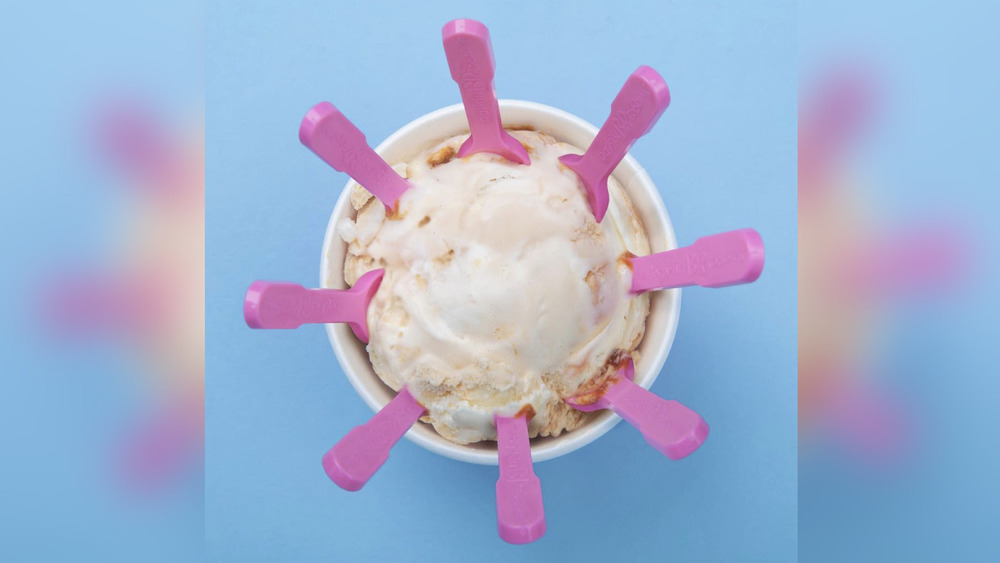The Importance Of Baskin-Robbins' Little Pink Sample Spoons
On a hot summer day, there are few things more satisfying than a frosty scoop (or two or three) of ice cream. Whether you take it in a cone or in a cup or whether you prefer chocolate or vanilla, the frozen sweet treat is a favorite among Americans, with the average person eating 19.7 pounds of ice cream annually (via the Wisconsin State Journal). One of the most popular places to snag a scoop is Baskin-Robbins. With over 2,500 locations across the country, according to the brand, the ice cream chain has 31 super sweet flavors — from rocky road to banana nut fudge — along with fun flavors of the month, which have included pumpkin cheesecake and cotton candy crackle, to name a few.
While Baskin-Robbins is famous for its ice cream, it's just as famous for the little pink spoons you get with your said scoop. What many people don't realize, however, is just how important those sample spoons have been in the history of the ice cream shop.
The little pink spoons boosted business
Baskin-Robbins first rolled out its "31 Flavors" concept in 1953, with the idea that there was a different flavor for every day of the month, Money Inc. reports. However, as delicious as the flavors were, many customers were hesitant to try out new ones and instead stuck to their classic go-tos like vanilla, chocolate, and strawberry. To encourage people to order some of the more unique flavors — like cotton candy or peppermint fudge ribbon) — Baskin-Robbins came out with the iconic little pink spoons as a way for fans to sample ice cream before committing to a whole cone.
It makes sense that the spoons are small (a sample is meant to be just a taste, after all) but why are they pink? According to Baskin-Robbins' Fun Facts page, pink was originally chosen as one of the chain's colors to represent the cherry on top of a sundae.

